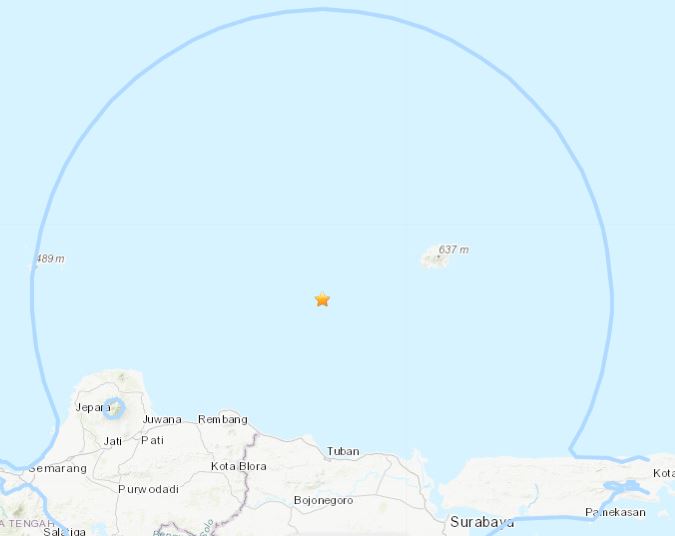
By Ed Davies and Jessica Damiana
JAKARTA (Reuters) – Indonesian authorities urged coastal-dwellers to head for higher ground on Friday after a tsunami warning with potential for waves up to three meters (10 feet) following a powerful earthquake off the islands of Sumatra and Java.
The U.S Geological Survey put the epicenter in the Indian Ocean about 227 km (141 miles) from Teluk Betung city on Sumatra with an initial magnitude of 7 that was later lowered to 6.8.
There were no immediate reports of damage or casualties, but strong tremors were felt in Jakarta, the capital, prompting people to run out of office buildings.
“It was so scary,” said Gustiani Pratiwi, carrying two children out of an apartment block in Jakarta after feeling the quake strongly.
Indonesia is situated on the so-called Pacific Ring of Fire, which is frequently hit by earthquakes and sometimes accompanying tsunamis.
The most devastating in recent Indonesian history was on Dec. 26 in 2004, when a magnitude 9.5 quake triggered a massive tsunami that killed around 226,000 people along the shorelines of the Indian Ocean, including more than 126,000 in Indonesia.
Indonesia’s geophysics agency said it would keep monitoring for a potential tsunami until at least 21:35 pm (1435 GMT) and warned residents to stay alert.
The tsunami risk was in southern parts of Banten province in Java and Lampung province in Sumatra, it said.
“Please look for higher ground at least 10 meters (33 feet) high,” agency chief Dwikorita Karnawati told a news conference.
TV footage showed passengers at Jakarta’s international airport rushing out of a terminal building, but authorities later said the airport was operating normally.
The quake could also be felt in other cities such as Yogyakarta on Java island.
One social media video showed panicked guests dashing out past a hotel swimming pool in Tasikmalya on Java island.
Last year, a tsunami hit the city of Palu in Sulawesi island, killing thousands, while a crater collapse at the Anak Krakatau volcano triggered a tsunami that killed at least 430 people in an area near the latest quake.
At Carita beach in Banten, which was affected by the Anak Krakatau quake, a resident described the alarm in the area.
“We are panicking a lot,” Sandi, a resident of Carita beach, told Metro TV by telephone.
(Reporting by Ed Davies and Jessica Damiana; Editing by Clarence Fernandez and Andrew Cawthorne)






